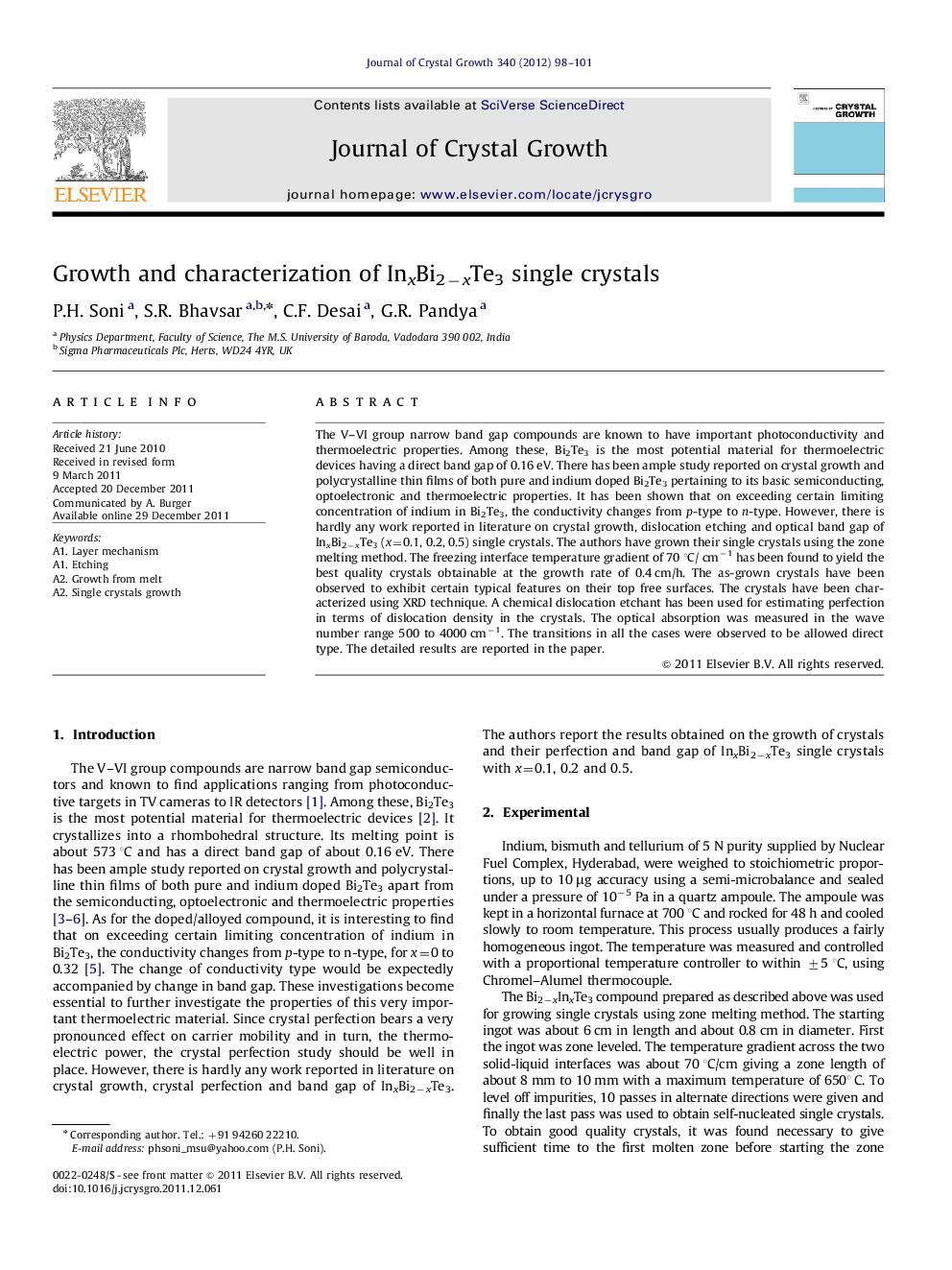| Article ID | Journal | Published Year | Pages | File Type |
|---|---|---|---|---|
| 1792019 | Journal of Crystal Growth | 2012 | 4 Pages |
The V–VI group narrow band gap compounds are known to have important photoconductivity and thermoelectric properties. Among these, Bi2Te3 is the most potential material for thermoelectric devices having a direct band gap of 0.16 eV. There has been ample study reported on crystal growth and polycrystalline thin films of both pure and indium doped Bi2Te3 pertaining to its basic semiconducting, optoelectronic and thermoelectric properties. It has been shown that on exceeding certain limiting concentration of indium in Bi2Te3, the conductivity changes from p-type to n-type. However, there is hardly any work reported in literature on crystal growth, dislocation etching and optical band gap of InxBi2−xTe3 (x=0.1, 0.2, 0.5) single crystals. The authors have grown their single crystals using the zone melting method. The freezing interface temperature gradient of 70 °C/ cm−1 has been found to yield the best quality crystals obtainable at the growth rate of 0.4 cm/h. The as-grown crystals have been observed to exhibit certain typical features on their top free surfaces. The crystals have been characterized using XRD technique. A chemical dislocation etchant has been used for estimating perfection in terms of dislocation density in the crystals. The optical absorption was measured in the wave number range 500 to 4000 cm−1. The transitions in all the cases were observed to be allowed direct type. The detailed results are reported in the paper.
► InxBi2−xTe3 (x=0.1.0.2 and 0.5) crystal grown by zone melting method. ► Dislocation density of the crystals found to be 1.7×104/cm2 on average. ► The band gap is found to be direct type decreasing with increasing x.
